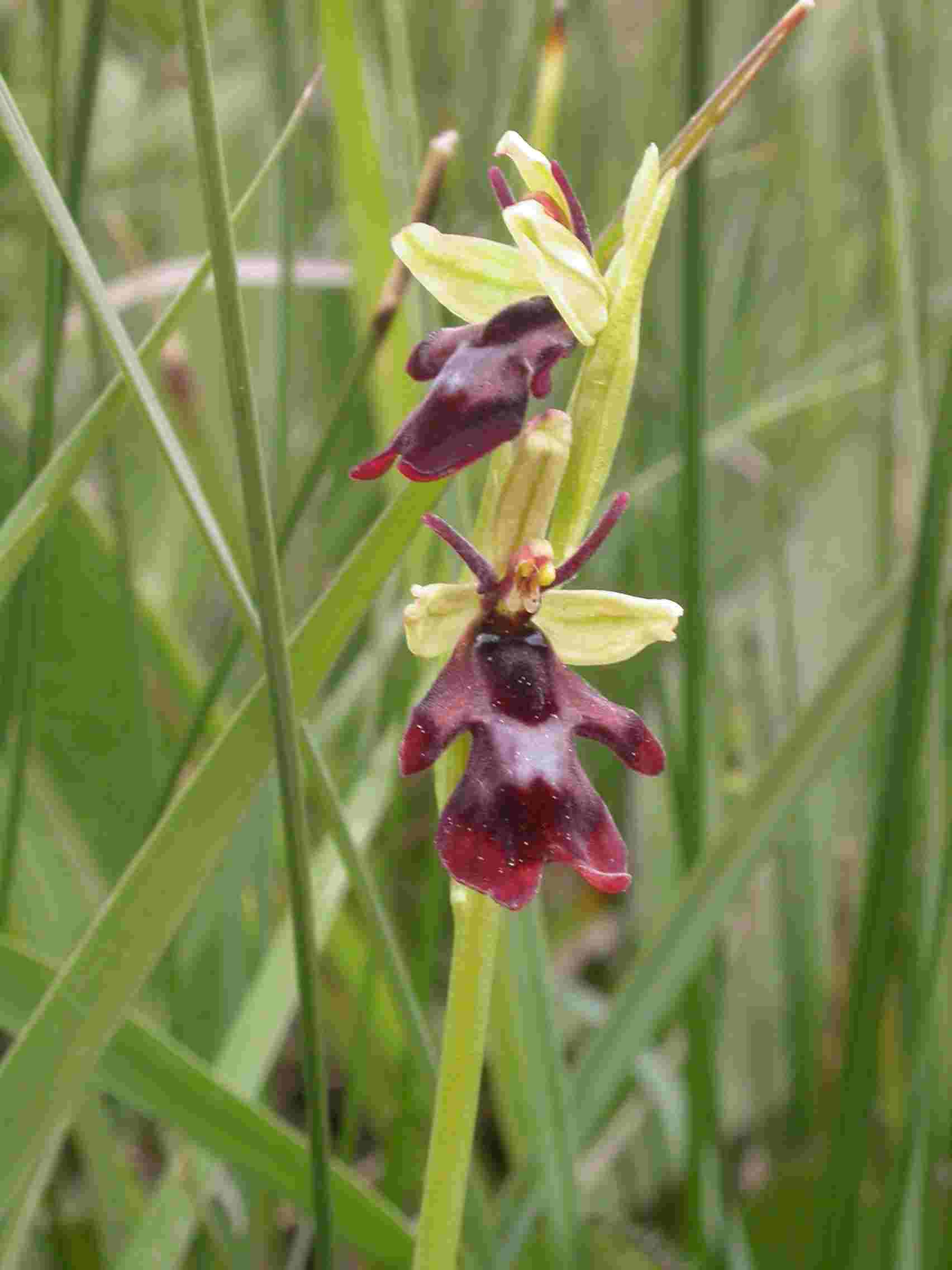GWENFRO
- RHOS Y GAD
SITE OF SPECIAL SCIENTIFIC INTEREST
MANAGEMENT
STATEMENT
What
is ‘special’ about Gwenfro
Rhos y Gad SSSI?
Gwenfro
Rhos y Gad has 4 special features.
-
Swamp,
characterised by great fen-sedge and tufted sedge
-
Fen
meadow, characterised by black bog rush, blunt-flowered rush, and
purple moor grass
-
Narrow-leaved
marsh-orchid, fen pondweed and marsh dandelion.
-
Medicinal
leech
As
well as the features listed above, Gwenfro
Rhos
y Gad has other habitats/ features that contribute to the
special interest. These include streams,
hedgerows ponds, small rock outcrops and scrub. This
mixture
of habitats is important for much of the wildlife such as yellow
sedge, petty whin, saw-wort, fly orchid, lesser butterfly orchid and
lesser clubmoss and these too are key components of the special
interest of the site. Unless specified below, management of this site
should aim to look after these habitats and species as well as the
listed features of interest.
|

|
What
do we want Gwenfro
Rhos y Gad to look like?
Approximately 95% of the site
should support wetland vegetation of which at least 80% should be fen
and the remainder swamp. All 3 nationally rare plant species
(narrow-leaved marsh-orchid, fen pondweed and marsh dandelion) will
continue to be present in the fen. The water-table should be at or near
the ground surface throughout the SSSI throughout the year. Scrub
should cover no more than 20 % of the site. Medicinal leech should be
present.
|
|
Fly orchid Ophrys
insectifera. ©
L T Colley/CCW
|
|
What
management is needed on Gwenfro
Rhos y
Gad SSSI and why?
Although
Gwenfro
Rhos y Gad is
an excellent place for wildlife it will only remain so if the
necessary management continues. CCW’s aim is to work with you
to ensure that this management is carried out.
What
does this mean in practice?
There
are many factors that could damage the special features at Gwenfro
Rhos y Gad if
they are not properly managed. These are the ones we regard as most
important:
Grazing:
Grazing
is essential to prevent the growth of rank grasses and invasion by
scrub. In winter parts of this site can be too wet to graze, but in
summer cattle and/or ponies should have access to all parts of the
fen. Should the ground surface become badly poached, grazing pressure
should be reduced. No supplementary feed should be placed within the
SSSI. Cattle or ponies provide feeding opportunities to leeches, but
are not significantly harmed by them.
Water
quantity:
Wetland
is dependant on an adequate supply of water. Any works within the
catchment, which could affect supply should be subject to scrutiny to
determine their impact. The water levels here are unusually low for a
fen and some parts of the site would benefit from retention of more
water, possibly through blocking of selected surface drains and
ditches. Streams and ditches within and downstream of the site should
not be overdeepened since this could lead to a lowering of the water
level within the site
Water
quality:
Increases
in plant nutrients can lead to the proliferation of common species
such as floating sweet-grass and Yorkshire fog and the loss of
typical wetland plants such as black bog-rush. Care must be taken in
spreading agricultural fertilisers (including slurry and abattoir and
creamery waste) elsewhere in the catchment to ensure no run-off into
ditches and drains which flow into the fen. No application or storage
of fertiliser, including farmyard manure, is permissible within the
site.
Finally
Our
knowledge and understanding of wildlife is continually improving. It
is possible that new issues may arise in the future, whilst other
issues may disappear. This statement is written with the best
information we have now, but may have to change in the future as our
understanding improves, in particular, of the possible/probable
impact of climate change. Any information you can provide on the
wildlife of your site, its management and its conservation would be
much appreciated.
If
you would like to discuss any aspect of your SSSI, or have any
concerns about your SSSI, please contact your local CCW office.
Your
local office is:
Countryside
Council for Wales
North
Wales Region
Llys
y Bont
Ffordd
y Parc
Parc
Menai
Bangor
Gwynedd
LL57
4BN
Telephone:
01248
672500
Fax: 01248
679259
